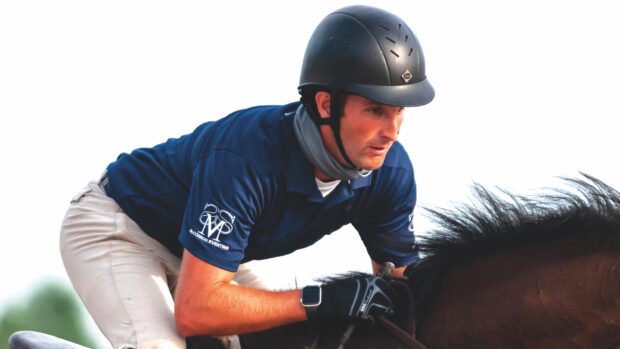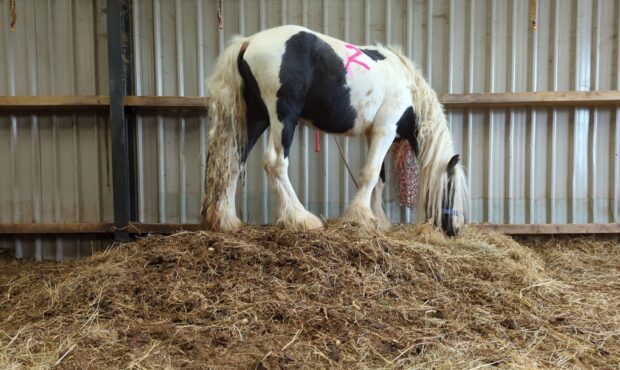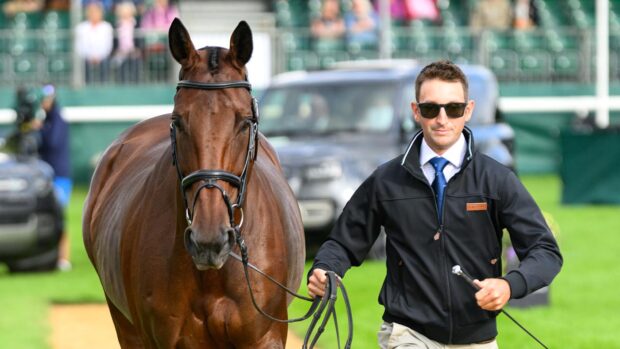We felt both tired, puzzled and bitter after a long endurance weekend in Compiegne (23-25 May, 2014) where we were acting as veterinary officials. Everything seemed to present well at least on paper, with a lovely location, a well tested organisation, a high class set of horses and very experienced group of jury and veterinarians…
A lot has been said in haste in the media about this competition, causing confusion and sometimes misinformation. As veterinarians who were officially involved, we felt the need to clearly express our point of view on these events if we chose to continue taking part in the equestrian endurance of the 21st century.
Compiegne rides saw an unstoppable wave of horses from all over the world, ridden at very high speeds, on the difficult but fast trails of the two CEIs. Late entries of many participants had led to some understaffing of judges, veterinarians and experienced official stewards, in the grooming area and along the course. The jury did well to organise the vetgate in order to pass fair judgments, but it also had to cope with constant intense pressure from some competitors who constantly aim to appeal against judgments and try to cheat systematically. The team of treating veterinarians also had to struggle with all too many metabolic eliminations who were presenting with high heart rates and advanced dehydration (surprising fact for a mild weather that weekend) and needed treating.
Our analysis of the reasons for this situation is that current practices of endurance in some group 7 countries is very far removed from the original spirit of our sport. These riders no longer follow the principle of making the most of the horse’s performance on the day by listening to their mount, but push their horse beyond its capacity, which only a few of the best manage to tolerate the harmful effects. This kind of dangerous attitude goes beyond what actual experienced vetgates and their team can cope with, and thus safety of the competing horses cannot be guaranteed anymore. Awareness of veterinarians involved did stop these tired “over-run” horses in the vetgates. Hardworking and painstaking treating veterinarians in the hospital managed to treat a large number of horses successfully.
The majority of treated horses recovered well and fast thanks also to their careful rider and grooming team who had monitored their horse. A few horses who were pushed too far, demanded more involved and prolonged treatments. Among those horses a mare who developed a neurologic syndrome at the third vetgate could not be successfully treated despite many efforts.
Despite sadness and frustration generated by the death of a horse one has been involved with, we are not aiming to express ourselves in reaction to this particular tragic death. It is through our deep love and respect of horses, our strong interest for the sport of endurance, as well our belief that we are one of the pillars of equine welfare and well-being, that we feel compelled to express our deep concern with some situations of abuse that we were not familiar with in European endurance until recently.
Some may remember the early days of endurance when poorly supervised horses could develop severe conditions. Since then, numerous elaborate and constantly evolving (thanks to published field studies) veterinary examinations at regular vetgates have enabled a reliable follow up of horses throughout races, and safe competitions for horses. This has been possible also thanks to the attentive monitoring by riders and grooming teams, at least within our European borders.
Responsibility for health and well-being of racing endurance horses cannot solely rely on veterinarians, judges or rules, although content and implementation could certainly be improved. Thus it is impossible for us to make sure that a horse has received an appropriate diet, a regular training adapted to the level of the race, if it has been adequately watered at the vetgate or at the assistance point, or if it has displayed any abnormal sign of fatigue, diarrhea or more subtle abnormalities. It is always for the rider and its team to know the horse best and be tuned to its needs. If not, one could easily demand too much and exceed how far the horse can go on the day. That is why race participants must be fully prepared to take full responsibility for their actions and assume consequences.
The environment of greater professionalisation of riding and the recent emergence of “jockeys” who ride a horse for which they know nothing of its training or daily management or feeding, or are not aware of the secret “magic supplements” given by some stables, is not conducive to the mutual understanding that needs to prevail between endurance horse and rider. Such practice of riding a horse at short notice, although routine in flat racing, is pejorative in endurance. Being attuned to the horse’s needs is of utmost importance even if one is not familiar with it, and this enables a quick reaction from the rider if fatigue is detected. A capable assistance team needs to watch for such signs, and be aware of their possible manifestations, however subtle and individual based.
In this overall context, as practitioners and scientists, we are also faced with a complex situation where recognition of metabolic and orthopedic criteria during the ride is made very difficult because of the use of doping agents. The development of these illegal practices is able to markedly mask typical symptoms of fatigue which we are trained to detect early at vetgates, and they enable overtired horses to present with apparently good clinical parameters, even when experienced veterinarians examine them over the usual vetgate period.
Veterinary checks as they were originally designed implied a perfect cooperation between rider/trainer, who knew their horse thoroughly, and a veterinarian, who was using its skill and medical experience to detect signs of fatigue. At present, we are unfortunately faced with some riders who barely know their horses, do not respect them, and who are in the habit of cheating, lying and concealing information. In these conditions, “modern” endurance cannot ensure the safety of horses and as practicing veterinarians we are faced with a situation we disapprove of, as well as the ineffectiveness or lack of real commitment from the FEI to solve this problem.
These horses are put in grave danger by what we consider to be unethical and antisportive practices. Other riders and teams also disapprove of this situation which makes them cynical about the ethics of this competitive sport, and needs to be fought with great force. Unfortunately, detection of such substances is both a difficult and costly effort, and therefore prevention is rendered difficult. It is crucial however not to adopt a defeatist attitude, and not let people, who put these generous and exceptional horses in danger out of sheer pride, get away with it .
Close monitoring during training and particularly during races needs to be implemented despite its great complexity, notwithstanding the difficulty of finding enough FEI –trained judges who are proficient, have natural authority, are irreproachable and have a volunteer status.
Witnesses from outside the world of endurance (such as: French Equine Veterinary Association, French League for the Protection of Horses, …) are therefore welcome because they can provide some hindsight and objectivity to situations of abuse which can then be better controlled or prevented.
In conclusion, as we are fully aware that we are driving forces that ought to ensure the welfare of endurance horses, we are also calling upon other players of the horse world to help us in our task: riders to exert a respectful and ethical care upon riding their horses, animal welfare people to be attentive witnesses at competitions, and national & international organizations to ensure the implementation of strong measures that can prevent abuse, in particular regarding doping.
We know that none of us can manage individually to safeguard this sport from an ethical failure that we have recently perceived. It is only by tightening our ways that we can continue to practice an endurance respectful of horses. For us European actors of this sport, there can be no compromise within our region, but we also have to make a clear commitment in regions where endurance suffers the most reprehensible excesses.
Dr. Vet. Christophe Pelissier
Dr. Vet. Pierre Romantzoff
Dr. Vet. Antoine Seguin
Dr. Jean-Louis Leclerc
Dr. Vet. Agnès Benamou-Smith



